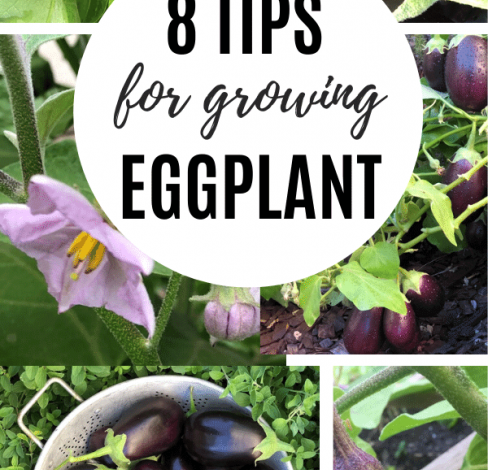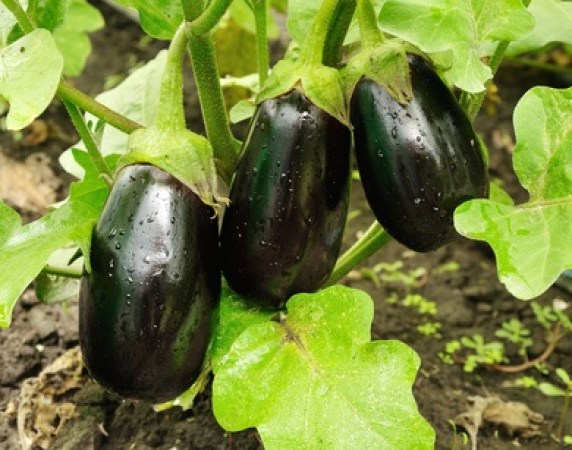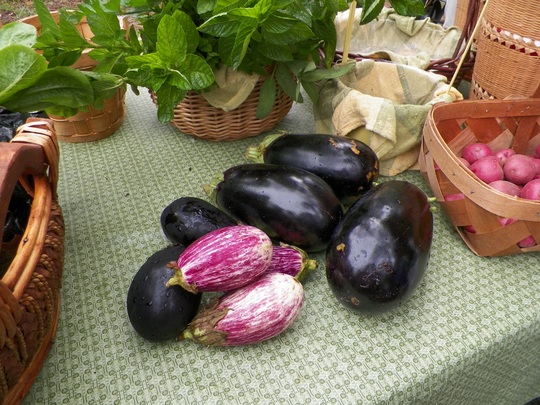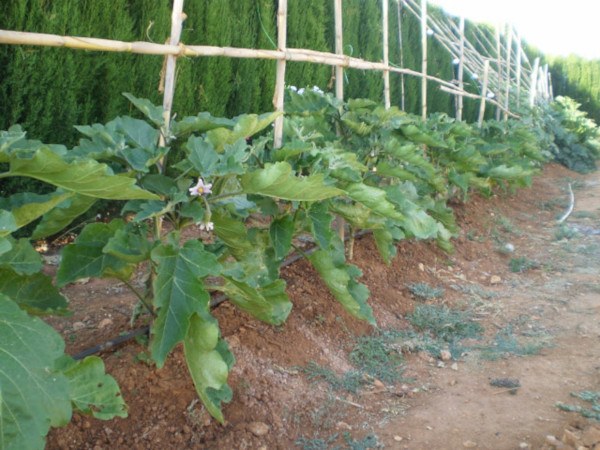How to Grow Eggplants in the Garden Step by Step: Complete Guide

Hello to all Farmers! With today’s article, we are going to return to the topics related to crops, we are going to see how to grow aubergines, since the time to sow is approaching ! The eggplant, a fruit from the tropical and subtropical areas of Asia. Around the year 1200 it was already cultivated in Egypt, from where it was introduced in the Middle Ages to the Iberian Peninsula and Turkey, to later spread throughout the Mediterranean and the rest of Europe. It was in the 17th century when it was introduced into food, after being used in medicine to combat skin inflammation and burns.

Properties and benefits of Eggplants
As you can see, eggplants have many properties. For example, it contains minerals such as calcium, potassium, phosphorous, magnesium, and iron, so it is good for preventing anemia.
It is also laxative and diuretic, and thanks to its calming effect, you can use the leaves as a remedy for herpes and burns. But above all its antioxidant value stands out: they have antitumor activity, delay the appearance of wrinkles, and also the polyphenols in the skin reduce LDL levels (the «bad» cholesterol) and contribute to the regulation of glucose levels.
In addition, they are very good stuffed with meat or battered, which is known as «garden fillets». What are you waiting for to sow them?
How to grow Eggplants step by step
We are going to explain everything you need to know to grow eggplants in the garden:
varieties of eggplant
The aubergine belongs to the Solanaceae family, a very common family among the fruits of the garden, since within it we also find other important crops such as tomato, potato or pepper.
Its scientific name is Solanum melongena L., and in Spain, two varieties are common: the black and the purple striped. The scratched one tends to be more popular because it is less bitter, but as always, that is up to you. There is also a special variety of eggplant for pickles.
Climate, light and soil necessary for eggplants
Like most nightshades, the aubergine is a hot-climate crop, which is why it is considered one of the most demanding in terms of temperature (more so than tomatoes and peppers). It supports high temperatures well, as long as the humidity is adequate, tolerating up to 40-45ºC.
The average temperature must be between 23-25ºC, and it does not tolerate temperatures below 0ºC, which is why it is a spring -summer crop.
As for light, it is a very demanding plant in terms of light, it requires 10 to 12 hours of light, so on short days it is necessary to make the most of the hours of light to avoid problems of deformation and poor development of the fruit.
It is not very demanding in soil, because it has a powerful and deep root system. However, in clay soils root suffocation problems can occur, quickly showing symptoms. In acid soils, it presents growth and production problems.
How to sow and plant eggplants
If you have the seed, you can start sowing in January to April, but do it in a nursery, especially if it is cold months, so that the seed germinates correctly.
The seeds take about 10 days to germinate. Once they have developed more, they are pricked, that is, they are moved to somewhat larger pots, with a volume of 1.5-3 l, so that the seedling is strengthened, and finally in April – May they are transplanted. to the definitive place, with a separation between rows of 70 cm-1 meter and about 40-50 cm from plant to plant.
How to stake aubergines
From the first moment tutoring will go well for him. He puts a cane of about 60 cm plant by plant, and fix it with a clamp, without tightening too much. You can also put a row of canes, at a maximum of 1.5 meters from each other, and carry a PVC elastic rope, because if not, at the end of development it is easy for the plant to fall over with the weight.

How to water eggplants
Watering should be abundant and regular. It is recommended to water for about 5 or 10 minutes at night, but you already know that it depends on the time of year and the temperatures.
Hilled in eggplants
It is carried out 15-20 days after transplanting when it is intended to add organic matter (manure, earthworm humus, etc.), covering the lower part of the plant with sand to protect it from contact with organic matter.
Hilling favors the formation of early roots and the rooting of the plants, in order to increase the aeration of the land, from which the crop benefits enormously.
formation pruning
It is carried out to delimit the number of stems with which the plant will develop (normally 2, 3 or 4). It is necessary to achieve greater earliness and better quality, improving the aeration and light conditions of the plant.
After hilling, suckers (secondary new branches that compete for nutrients from branches with flowers or fruits) and the leaves that develop below the “cross” are removed.
leafless
It is carried out on adult plants that have not been subjected to training pruning, since it is advisable to thin the plant to favor aeration, since the leaves are very leafy, eliminating some leaves from the interior and those from the lower part, as well as the dry ones. or sick. It must be carried out under conditions of low environmental humidity and with dry plants.
Thinning of flowers and fruits
In the floral bouquet, only one of the 3-4 flowers will originate the main fruit, so it is convenient to eliminate the rest, to prevent nutrients from being carried away. It is advisable to thin out malformed fruit or fruit damaged by pests or diseases.
Association of the eggplant with other crops
It is compatible with zucchini, pumpkin, garlic, celery, onion, cabbage, escarole, spinach, beans, lettuce, potato, leek, radishes and carrots.
eggplant harvest
It is a medium-long cycle crop, so the harvest begins 70-90 days after transplanting. They are usually picked from June to November, and you have to try to pick them when they are medium, better than big: the more ripe, the less flavor. It is best to pick them when they are hardest to the touch and brightest in color.
This is all about the cultivation of the aubergine, I hope you are encouraged to cultivate it and share it with the entire Agrohuerto community. Soon we will publish an article on the pests and diseases of the eggplant, so that you already have all the complete instructions and you can get a good harvest of this rich vegetable.
Until the next Agrohuerters!

![Photo of The White Fly (Aleyrodidae): [Identify, Fight and Prevent It]](https://www.complete-gardening.com/wp-content/uploads/2022/08/the-white-fly-aleyrodidae-identify-fight-and-prevent-it-390x220.jpg)

![Photo of Marijuana Cuttings: [Associations, Best Time and Planting]](https://www.complete-gardening.com/wp-content/uploads/2022/08/marijuana-cuttings-associations-best-time-and-planting-390x220.jpg)
![Photo of Prune Chrysanthemums: [Importance, Season, Tools, Considerations and Steps]](https://www.complete-gardening.com/wp-content/uploads/2022/08/prune-chrysanthemums-importance-season-tools-considerations-and-steps-390x220.jpg)